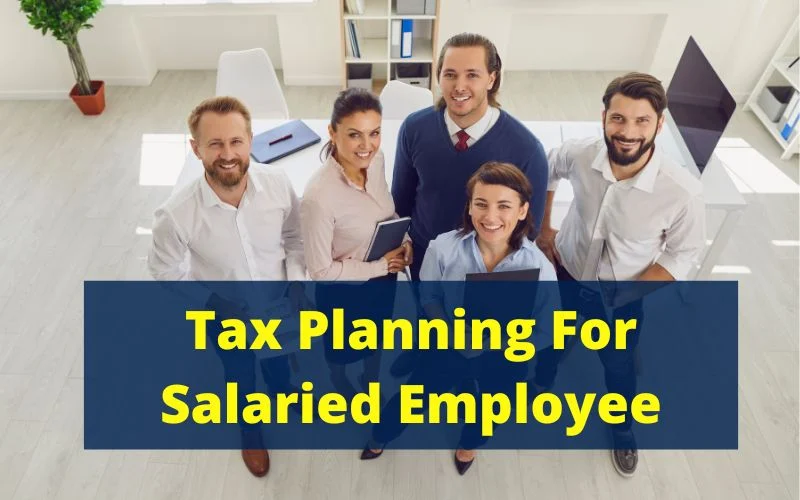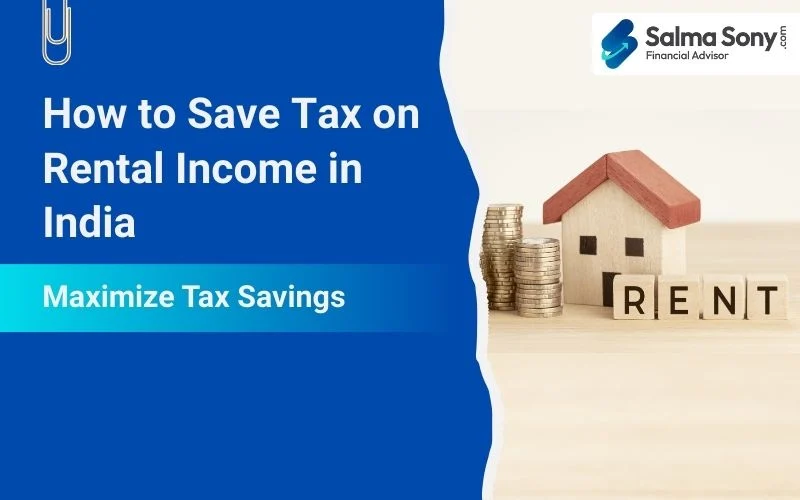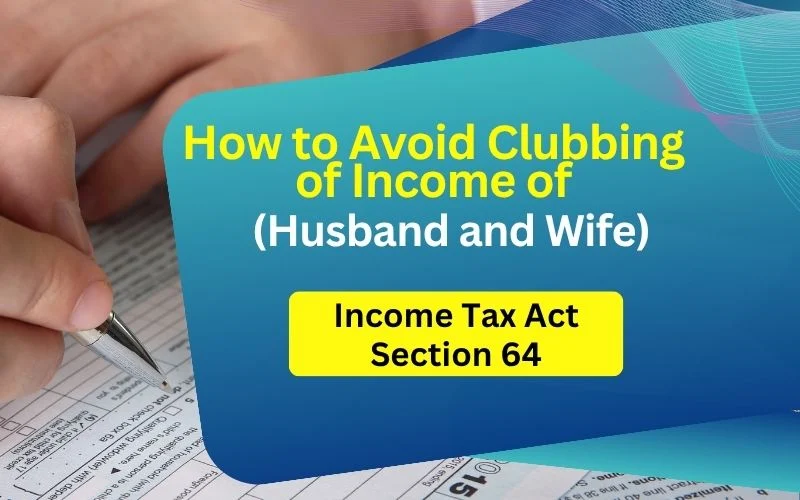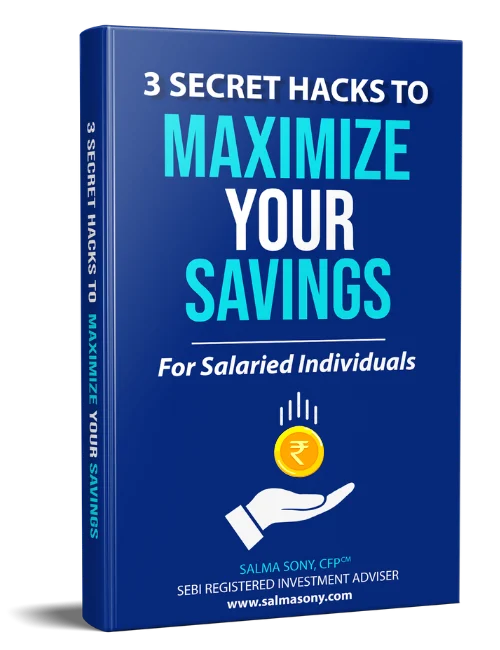Time to submit investment proof to the employer for tax savings. Here is a strategy to maximize tax savings and tax planning for salaried employees.

Steps for tax planning for salaried employees
Tax planning has always been considered challenging to plan. However, if you plan it in steps, it is effortless. In this article, I have given you a guide to planning your taxes like an expert. So sit tight with pen and paper, and read the article till the end, as it can save a lot of taxes for you.
Step 1: Understand the components of your salary to take advantage of it
It is time to refer to your offer letter to understand which component is a part of your compensation so that you can take advantage.
When you read the below-mentioned component, start making the list of it and write the amount for each.
Example- HRA- Rs. 1 lakh, LTA – Rs. 50,000, etc
HRA (House Rent Allowance)
HRA is one of the standard salary components that most salaried employee knows. If you stay on rent, you must submit the proof of rent to your HR to claim a tax benefit.
Here is how you can calculate your HRA eligibility for tax exemption.
The least of the following is exempt:
a) Actual HRA Received
b) 40% of Salary (50% if the house is situated in Kolkata, Delhi, Mumbai, or Chennai)
c) Rent paid minus 10% of Salary (Basic Salary + Dearness Allowance)
Here is HRA Calculator for easy and quick calculation.
Note:
i) If you stay in your own house or do not pay rent, you cannot claim HRA.
ii) It is mandatory to furnish a landlord PAN to claim HRA in case your rent for a year exceeds Rs. 1 lakh
LTA (Leave Travel Allowance)
Only a few salaried employees have this. However, if you found it in your salary component, you can claim considering the conditions below are fulfilled.
- You must travel to claim the exemption, as proof of travel is required.
- Only travel within India is considered for exemption; however, if your trip is outside India, that will not be considered for exemption under LTA.
- The LTA exemption for travel is allowed for the employee or with the employee’s family. However, this exemption is not available for more than two children born after 1st October 1998 and also for multiple births after one child. Children born before 1st October 1998 do not have any restrictions. For you to claim LTA, it is essential to know LTA works on a block basis where the current block is 2022-2025; where you can claim LTA for two travels in a block of four years, and by any chance if you missed claiming during that block, then you have an opportunity to carry it over to the first year of the subsequent block year.
Mobile Reimbursement
Suppose you find a mobile reimbursement component in your salary component. In that case, you can claim reimbursement of the actual bill paid or the amount provided in the salary component, whichever is lower, by providing proof of mobile expense.
Petrol Reimbursement
Suppose you find a petrol reimbursement component in your salary component. In that case, you must submit the bill to your employer to claim reimbursement of the actual bill paid or the amount provided in the salary component, whichever is lower, by providing proof of petrol expense.
Travel Allowance
Travel allowance covers costs related to travel while on tour or transfer while on duty. This allowance also includes travel costs incurred while transferring to another location, including packaging or transporting personal objects.
Retirement Benefits (Gratuity)
Private sector employees get exemptions on gratuity depending on if they are covered under the Payment of Gratuity Act. Gratuity exemption applies up to an amount of Rs.20 Lakhs for employees who are covered under the Payment of Gratuity Act. And for those who are not covered under the Gratuity act, the tax exemption cap is at Rs.10 Lakh. For Government employees, gratuity is fully exempted from tax.
Step 2: Investment in Deductible Options
In this, we will cover Chapter VI-A of the IT section wise, so that you make sure every section is covered.
Section 80C
Take a good look at Section 80C. The max tax benefit one can claim under section 80C is Rs. 1.5 lakhs. Begin with the most important option, which has a high chance you have it in your salary component, with which you may cover Section 80C completely without further investment.
Remember, you will not get an additional tax benefit by investing in tax saving instrument. Hence, analyzing the gap before investing is a must. In this, we will understand the seven tax saving options, where you can invest for tax saving only if there is a gap.
Let’s consider the first four components in the below list. If the combination of the first four components is Rs. 1.5 lakhs, then you do not need any further investment. However, if it is less than 1.5 lakhs, invest the gap amount in any combination of the investment options from no. 5-8, and that will take care of your section 80C.
- Employees’ Provident Fund (EPF): Employee (your) contribution in EPF is considered for tax benefit under section 80C.
- School Tuition Fee: Your child’s school tuition fee for up to two children.
- Home loan Principal: If you have a home loan, then the principal component of the home loan is allowed to claim under section 80C.
- Life Insurance Premium: If you have a life insurance policy, be it term insurance, money back, endowment, whole-life, or ULIP, the premium paid for such life insurance is allowed to claim under section 80C. Note: Do not consider investing in the insurance policy for tax savings as it neither gives you a good cover nor a good return. The wisest action in investment planning is keeping life cover and investment separate.
- Public Provident Fund (PPF): It is one of the famous post office instruments. If you invest in this, then it will be considered under section 80C.
- Sukanya Samridhi Yojna (SSY): It is one of the powerful post office instruments to encourage girl child education/ marriage. If you invest in this, then the contribution is considered under section 80C. If you have a girl child below the age of ten, buying this scheme can be helpful for her higher education/ marriage.
- Tax Saving FD: The tenure of FD must be five years to avail tax benefits against FD under section 80C.
- Equity Linked Savings Scheme (ELSS): ELSS is a mutual fund scheme having the objective of tax savings and wealth creation. The ELSS Scheme lock-in period is three years. If you have a SIP in ELSS, each SIP installment will have a lock-in period of 3 years.
💡Pro Tip: In the case of SIP in ELSS, allocate it for a long-term goal or consider investing quarterly (once in 3 months) so that redemption becomes easy.
Section 80CCD (1B)
National Pension Scheme (NPS): It is a voluntary, defined contribution retirement savings scheme where the contribution is defined, and the outcome/savings will depend upon the scheme’s performance.
You can buy NPS scheme online hassle-free using eNPS kfintech or NSDL portal or from your bank portal too. The maximum tax benefit you can claim under this section is Rs. 50,000. However, if you apply it through your employer, you can take benefits up to Rs.7.5 lakhs.
Note: You can withdraw contributions made in NPS only once you reach 60. As NPS is purely for retirement, be mindful of this investment as it gets locked for the long term.

Section 80D
Health Insurance Premium: If you have personal health or critical illness insurance or bought group insurance from your employer where you make the premium payment, then you can claim a deduction under section 80D.
Here is the maximum limit to claim the deduction:
Scenario-1 (Both are Non-Senior Citizens)
| Particulars | Non-Senior Citizen | Senior Citizen |
|---|---|---|
| Self, spouse, and dependent children | 25,000 | – |
| Parents | 25,000 | – |
| Total | 50,000 |
Scenario-2 (Self is a Non-senior citizen, and Parents are Senior Citizens)
| Particulars | Non-Senior Citizen | Senior Citizen |
|---|---|---|
| Self, spouse, and dependent children | 25,000 | – |
| Parents | – | 50,000 |
| Total | 25,000 | 50,000 |
Scenario-3 (Both are Senior Citizens)
| Particulars | Non-Senior Citizen | Senior Citizen |
|---|---|---|
| Self, spouse, and dependent children | – | 50,000 |
| Parents | – | 50,000 |
| Total | – | 1,00,000 |
Remember the other important sections
Section 80E
If you have taken a loan to pursue your higher education or for your spouse, children, or a student of whom you are a legal guardian, you can take benefit under Section 80E of the Income Tax Act, 1961. The deduction is allowed on the total interest amount of the EMI paid during the financial year. One can claim the deduction under section 80E for a maximum of 8 Assessment Years.
Section 80G
One can claim a deduction under Section 80G of the Income Tax Act for contributions to specific relief funds and charitable institutions. However, all donations are not eligible for deductions under Section 80G.
To claim a deduction under section 80G, the following details need to provide while filing your income tax return:
- Name of the donee
- Address of the donee
- PAN of the donee
- Contribution amount, along with the breakup of contribution in cash and another mode
Before claiming the deduction, you need to check if your donation is eligible for a 100% or 50% deduction with or without the qualifying limit.
Have you taken a home loan?
Make sure you claim an interest deduction under Section 24(b) is capped at Rs 2 lakh (including current year interest + pre-construction interest).
And the good news is, if your home loan is eligible for deduction under Section 80EEA, you can then claim an additional deduction of Rs 1.5 lakh.
Conditions for claiming the deduction:
- A housing loan must be taken from a financial institution or a housing finance company for buying a residential house property.
- The taxpayer must be a first-time home buyer and should not own residential house property on the date of sanction of the loan.
- The individual taxpayer will not be eligible to claim a deduction under Section 80EE.
- The loan must have been sanctioned between 1st April 2019 and 31st March 2022.
- The stamp duty value of the house property should be less than or equal to Rs 45 lakhs.
Note: All deductions mentioned above will not be applicable if you opt for the new tax regime.
Conclusion
Keeping all the sections mentioned above in mind, if you plan your taxes, then no one can stop you with max tax savings. The idea is to use all the provided sections wisely to save taxes and avoid tax evasion.
Important Articles related to Personal Finance
- Objective of Investment
- Investment Planning For Salaried Employees
- Mutual Fund KYC Online Registration
- How To Invest In Direct Mutual Funds?
- How To Start SIP Investment In Mutual Funds?
Frequently Asked Questions
Q-1: Is salary income upto 5 lakhs tax free?
As per income tax slab individuals earning up to Rs 2.5 lakh per annum do not have to pay any taxes. However, taxable income up to Rs 5 lakh is also practically tax-free due to the rebate provided by Section 87A. For income above Rs 5 lakh tax slab will be applicale for tax liability calculation.
Q-2: How to pay zero tax upto 10 lakhs salary income p.a?
As an individual make sure to claim exemption Section 80C, Section 80CCD(1), Section 80D, Section 80G, Section 80E of the Income Tax Act along with taking advantage of salary component like HRA, LTA, etc.
Q-3: What is the difference between Tax Planning, Tax Avoidance, and Tax Evasion?
Tax Planning: Tax planning is a legal way to reduce one’s tax liability by using various law provisions. Tax Avoidance: Tax avoidance is a way in which taxpayers take advantage of the loopholes of the Tax Act that reduce their tax liability. This is the act of minimizing tax liability without breaking the law or within the limits of the law. Tax Evasion: Tax evasion is a way to reduce tax liability by opting for illegal ways like understating the income or inflating expenses






2 Responses
Thank you Salma for sharing this information.
It’s my pleasure, Akash.